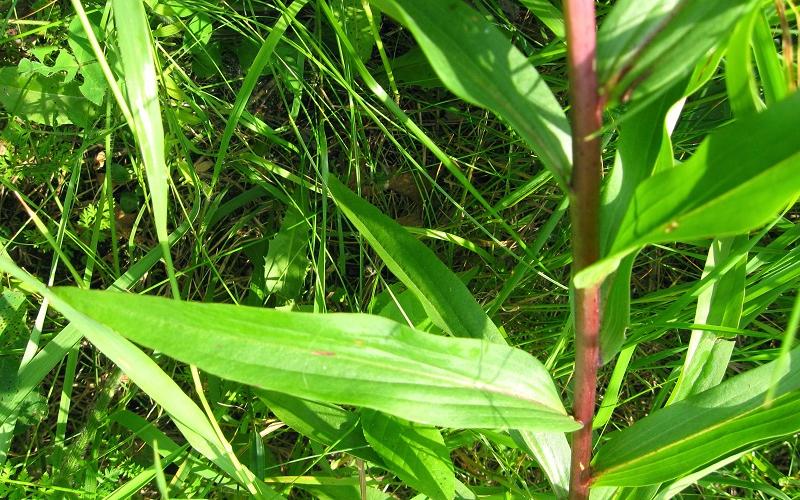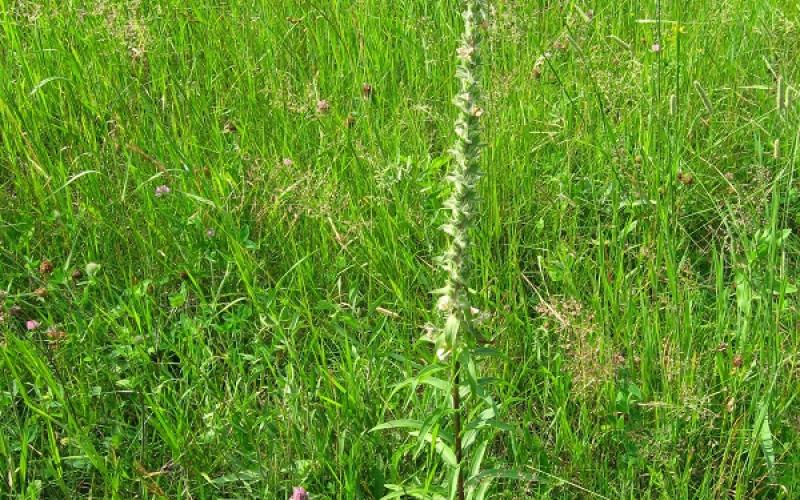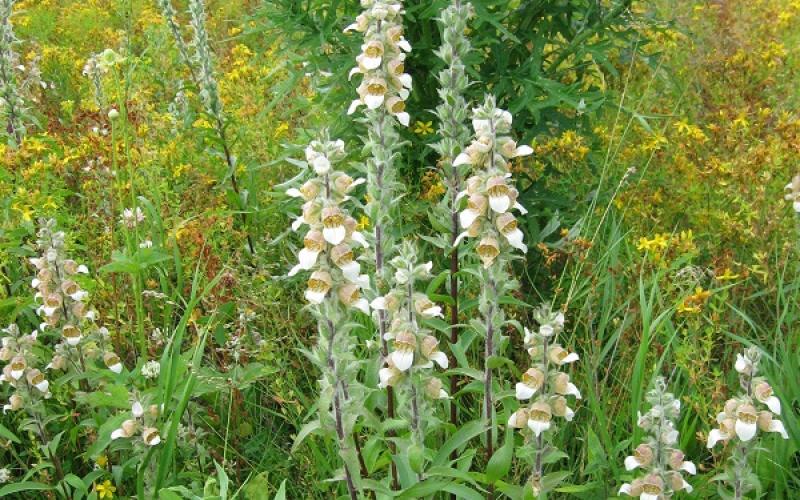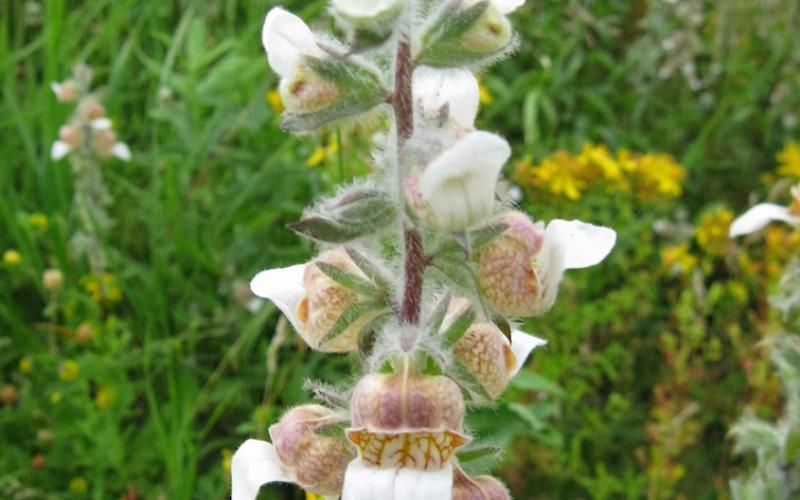Common Name: Grecian Foxglove, Woolly Foxglove
Scientific Name: Digitalis lanata Ehrh.
Related Species: D. lamarckii auct. balcan., D. purpurea L., D. grandiflora Mill., D. lutea L.
Legal Status
All above and below ground parts of the plant must be destroyed. Additionally, no transportation, propagation, or sale of this plant is allowed. Failure to comply may result in an enforcement action by the county or local municipality.
Background
Grecian foxglove is native to central and southern Europe. It was brought to North America as an ornamental then escaped cultivation. In Minnesota, it is invasive and displaces desirable vegetation. Grecian foxglove is a threat to Minnesotans and is poisonous to humans, livestock and wildlife.
Description
- Grecian foxglove is a perennial plant that forms a rosette its first year, then bolts and sends up a single flowering stem its second and subsequent years.
- The flowering stems are unbranched and grow 2- 5 feet tall with many tubular flowers arranged in an elongated cluster. Flowers are creamy white to pale yellow with brownish-purple venation inside.
- Leaves are simple, alternate, and oblong-shaped with a pointed tip. Flowering stems and calyxes are covered with woolly hairs.
- Flowering occurs in the summer. The flowers are pollinated primarily by bees, after which seed-containing oval pods are produced.
- Seed production is prolific and is the only means of reproduction for this species.
- The common garden foxglove, D. purpurea, can be distinguished by the lack of woolly hairs on the stem and calyx. The leaf shape of garden foxglove is more rounded and the flowers exhibit a wide range of colors. Garden foxglove has not been reported as invasive in Minnesota. Multiple species of Digitalis can hybridize, but no hybrids have been reported in Minnesota.
Habitat
Grecian foxglove thrives in habitats ranging from hot, dry sites in the Mediterranean to cool, moist, high altitude sites in the Himalayas. Reported infestations in Minnesota and Kansas are in open sunny roadsides, residential yards, grasslands, river bluffs, and forest margins.
Means of spread and distribution
Not knowing its negative potential, gardeners planted Grecian foxglove as an ornamental. Established stands produce large amounts of seed that can be spread by wind, water, vehicles, humans, wildlife, and by moving seed-containing soil. All reported infestations in Minnesota are in Hennepin and Washington Counties.
Impact
Grecian foxglove is toxic to humans, livestock, and wildlife. Grecian foxglove cut and dried in hay could result in livestock poisoning. This species is also invasive and displaces desirable vegetation such as forage and native plants.
Prevention and management
- Do not plant Grecian foxglove or move soil containing seed of this species. Avoid direct contact with this plant to prevent toxin absorption through skin. Wear protective clothing and rubber gloves when handling this species.
- Hand-pulling is not recommended due to concerns about exposure to toxins and disposal issues. However, repeated hand-pulling (wear protective gloves and clothing) in the spring and fall can control very small populations. Pulling larger populations may result in disturbed areas that are ideal for Grecian foxglove seedlings to germinate.
- Frequent mowing during the growing season for multiple years may control this species if flowering is prevented. Grecian foxglove can flower and produce seed on a short stem after mowing. Because of this, preventing all flowering may be a challenge.
- Annual herbicide applications (in spring and/or fall) can reduce Grecian foxglove populations over time. For specific herbicide recommendations, check with your local University of Minnesota Extension agent.
- For all management methods, it is important to monitor several years after treatment due to germination from the Grecian foxglove seedbank.
Toxicity
All parts of Grecian foxglove are poisonous in both fresh and dried forms. Cardiac glycosides from Grecian foxglove include digoxin and digitoxin and primarily affect cardiovascular, neurologic, and gastrointestinal systems. Ingesting plant parts or absorbing compounds through skin in direct contact with Grecian foxglove may adversely affect humans and other mammals and could be fatal. It is possible that smoke from burning plants may be toxic.





